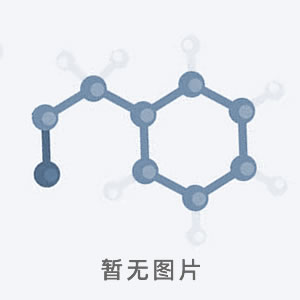本网站销售的所有产品仅用于工业应用或者科学研究等非医疗目的,不可用于人类或动物的临床诊断或者治疗,非药用,非食用。
Recombinant Human GRO gama/CXCL3
英文名:
Cas号:
Cas号:
检测信息查询

| 货号 | 规格 | 货期 | 库存 | 价格 | 会员价 | 订购 |
| 1308132710-10 μg | 0 | ¥4400 | ||||
| 1308132710-50 μg | 0 | ¥11600 |
| 别 名 | |
| Cas号 | |
| M D L | |
| 分子式 | |
| 分子量 | |
| 产品参数 | |
| 性状 | Recombinant Human GRO gama/CXCL3 通过与细胞表面趋化因子受体相结合作用介导其对靶细胞的影响。
Synonyms rHuGRO-γ/CXCL3; C-X-C motif chemokine 3; MIP2-beta ; 重组人 CXC 趋化因子3 Species Human Source E. coli Accession P19876 Gene ID 2921 Molecular Weight Approximately 7.9 kDa AA Sequence ASVVTELRCQ CLQTLQGIHL KNIQSVNVRS PGPHCAQTEV IATLKNGKKA CLNPASPMVQ KIIEKILNKG STN Biological Activity Full biological activity determined by a chemotaxis bioassay using human CXCR2 transfected human 293 cells is in a concentration range of 10-100 ng/mL. Appearance Lyophilized powder. Formulation Lyophilized after extensive dialysis against 20 mM PB, pH 7.4, 50 mM NaCl. Endotoxin Level <1 EU/μg, determined by LAL method. Reconstitution Reconstitute the lyophilized recombinant Human GRO gama/CXCL3 (rHuGRO-γ/CXCL3) to 0.1-1.0 mg/mL using sterile distilled water or aqueous buffer containing 0.1% BSA. Storage & Stability Lyophilized recombinant Human GRO gama/CXCL3 (rHuGRO-γ/CXCL3) is stored at -20°C. After reconstitution, it is stable at 4°C for 1 week or -20°C for longer. It is recommended to freeze aliquots at -20°C or -80°C for extended storage. Shipping Room temperature in continental US; may vary elsewhere. Background CXCL3 is a small cytokine belonging to the CXC chemokine family that is also known as GRO3 oncogene (GRO3). CXCL3 controls migration and adhesion of monocytes and mediates its effects on its target cell by interacting with a cell surface chemokine receptor called CXCR2[1]. CXCL3 also regulates cell autonomously the migration of the precursors of cerebellar granule neurons toward the internal layers of cerebellum, during the morphogenesis of cerebellum[2]. |
| 贮存 |
- Recombinant Rat GRO alpha/CXCL1
- Recombinant Human GRO beta/CXCL2
- Recombinant Rat GRO beta/CXCL2
- Recombinant Human GRO gama/CXCL3
- Recombinant Mouse Heparin-Binding EGF-like Growth Factor
- Recombinant Human Hemofiltrate CC Chemokine-1/CCL14
- Recombinant Human Hemofiltrate CC Chemokine-4/CCL16
- Recombinant Human I-309/CCL1

 小程序扫码下单
小程序扫码下单

 沪公网安备 31012002003054号
沪公网安备 31012002003054号